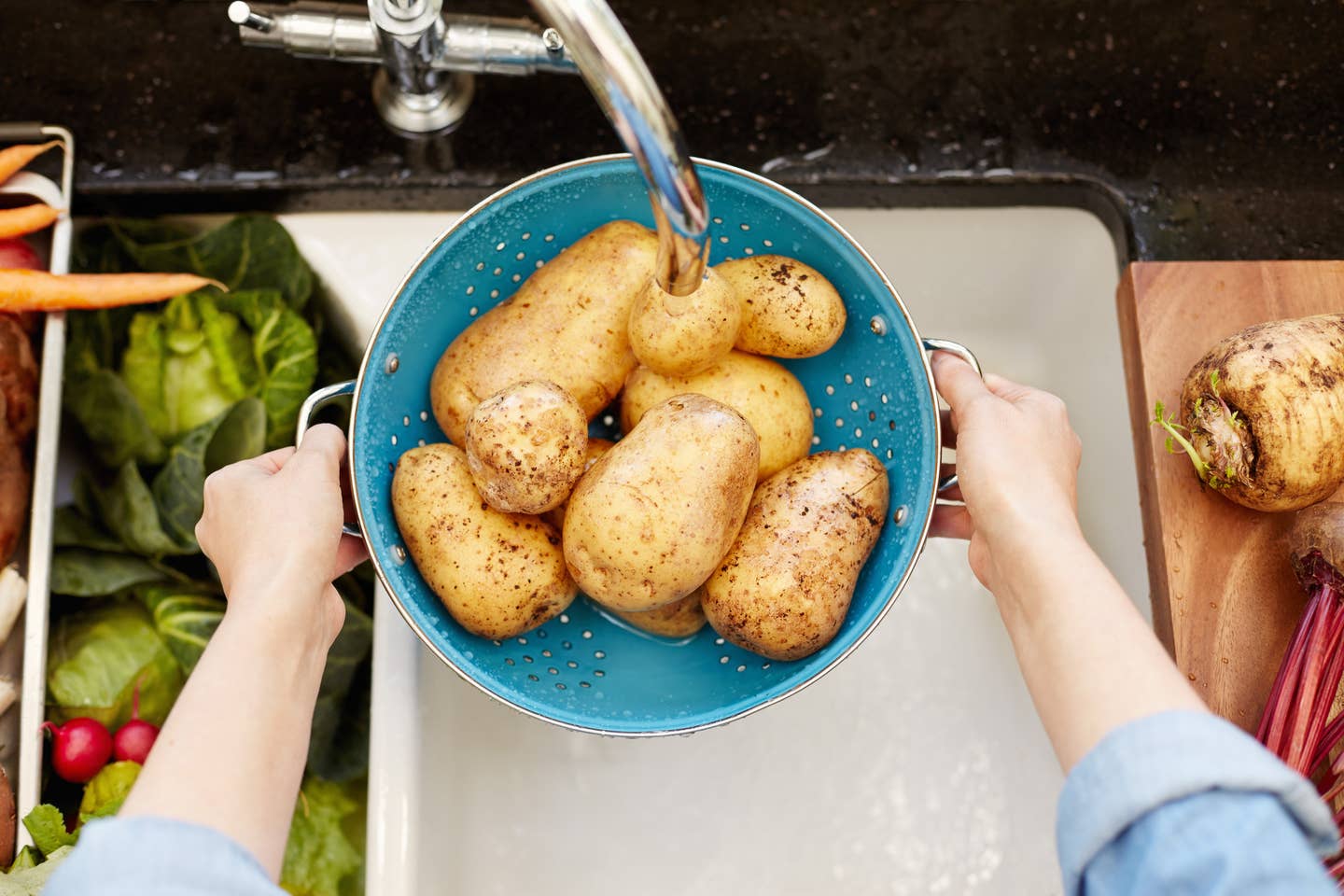
Here’s How to Choose Healthy Carbs and Lose Weight, According to Experts
The low-carb diet trend is hotter than ever. But if you’re avoiding carbs for weight loss or health benefits, or because you’re following a keto diet, it's time to reconsider. Carbohydrates are your body’s main fuel source, and your brain also prefers carbohydrates as well, so the key to being healthy is choosing the right carbs, experts say. “You need carbohydrates to thrive,” explains Nichole Dandrea-Russert, M.S., R.D., registered dietitian nutritionist in Atlanta and author of The Fiber Effect.
For many individuals trying to lose weight, carbs is a four-letter word, to be avoided and derided, yet nothing could be further from the truth. “Many people don’t know enough to differentiate between a whole food carbohydrate with its fiber, water, and nutrients intact and refined carbohydrates that are completely devoid of these essential nutrients,” says Chef AJ, Los Angeles-based vegan chef, best-selling author of The Secrets to Ultimate Weight Loss and Unprocessed, and host of Chef AJ Live on YouTube. “There’s a big difference in the way the body reacts to eating an apple versus apple pie or a baked potato versus potato chips.”
There are good carbs and bad carbs, and knowing the difference between them can have a huge impact on your health, not to mention your weight. Here’s the skinny on how to choose the healthiest carbs.
What Are Refined Carbs and Are they Bad For You?
Fortunately, you don’t need a degree in nutrition to understand the differences between good and bad carbs, as there are two main categories: Processed and unprocessed. While processed will harm your health and hamper weight loss efforts, unprocessed carbs will boost your health and even aid in weight loss or weight management.
Processed carbs, which are also called refined simple carbohydrates, include foods like white bread, white rice, and pasta, candy, snacks, cookies, and cake, and there’s nothing nutritious about them, even if they are vegan. “They don’t come with fiber or phytonutrients and unless they’ve been fortified, they’re stripped from their naturally occurring vitamins and minerals,” Dandrea-Russert says. They’re called “empty calories” because they provide calories but have little to no other beneficial nutrients.
Because processed carbs exist in their simplest form, your body digests them quickly, which can lead to a cascade of negative events. “They can cause a rapid increase in blood sugar followed by a release in insulin, which stores excess carbohydrates as body fat if it’s not used for energy right away,” Dandrea-Russert says.
Worse? Without any fiber in these foods, those carbohydrates will enter the bloodstream quickly and won’t activate hormones that spike hunger. As a result, your brain won’t get the signal that you’re full so you want more. This cycle can lead to weight gain, inflammation, fatigue, mood swings, and chronic illness.
How to Keep Blood Sugar Levels Low and Eat Carbs
Unprocessed carbs, on the other hand, are whole foods like whole grains, legumes, fruits, and vegetables (especially starchy ones like sweet potatoes, purple potatoes, red potatoes, and yams) that are complex in nature, meaning that they take longer to digest. “That results in stable blood sugar and energy levels,” Dandrea-Russert says.
Whole Foods Contain Fiber Which Helps Control Blood Sugar Levels
When you choose carbs with high fiber content it helps keep blood sugar low and provides fuel for healthy bacteria in your gut. Recommended intake is 14 grams of fiber per 1,000 calories. That’s about 30 to 40 grams per day, Dandrea-Russert says, but of course, this is only a minimum recommendation, and many plant-only eaters nosh well above this.
A whopping 95 percent of Americans don’t consume enough fruits and vegetables a day, most eating less than 15 grams a day. One way to get more fiber? Include at least three plant-based colors with every meal, she adds. For instance, instead of your avocado toast consisting of only avocado and toast, add leafy greens, purple onion, and red radish.
Instead of Looking for Low-Calorie Carbs, Choose High Fiber Ones
Other components you’ll get from whole carbohydrate-rich foods include phytonutrients that help prevent inflammation and diseases that stem from inflammation and vitamins and minerals that support everything from bone and brain health to immunity and hormone synthesis.
Compare, for instance, a slice of white bread that has about 70 calories versus a piece of whole-grain bread, which has about the same calories, Dandrea-Russert says. While the white bread doesn’t contain many minerals, vitamins, phytonutrients, or fiber, the whole-grain bread has four times the amount of potassium and magnesium, three times the zinc, and typically three to five grams of fiber per slice.
How to Shop for the Healthiest Carbs. First Head to the Produce Aisle
Want help shopping for the healthiest carbs? Follow these three simple strategies:
- Eat whole foods: The more whole the food, the better. As soon as food starts moving away from its original form, it becomes more processed. That includes things like olive oil, coconut oil, and peanut butter, which Chef AJ says are not whole foods.
- Spend most of your time shopping the periphery of the store: This is where you’ll find the healthiest foods, including those whole, healthy carbs, Dandrea-Russert says. Processed foods live in the aisles so limit how much you shop them.
- Remember this simple mantra: “A good carb comes from a plant while a bad carb is manufactured in a plant,” Chef AJ says, adding that the healthiest carbs don’t require packaging or labels.
Bottom Line: “If you eat a low-fat diet with only whole foods in their whole food form, there’s no way you can be anything but lean and healthy,” Chef AJ says.
More From The Beet






